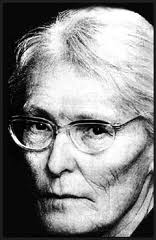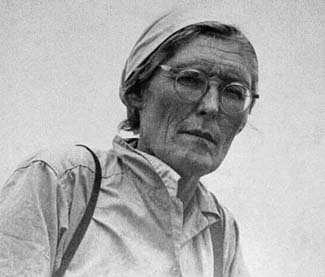<Back to Index>
- Archaeologist Maria Reiche, 1903
- Architect and Sculptor Hendrick de Keyser, 1565
- Minister of State Klemens Wenzel, Prince von Metternich, 1773
PAGE SPONSOR


Maria Reiche (1903 – 1998) was a German-born mathematician and archaeologist who is famous for her research in the Nazca lines in Peru, beginning in 1940. She helped educate people about the resource and gain government recognition and preservation of the property. In 1995 the Nazca Lines were declared a UNESCO World Heritage Site.
Maria Reiche was born May 15, 1903 in Dresden. She studied mathematics, geography and languages at the Dresden Technical University.
In 1932 she began work as a nanny and teacher for the children of a German consul in Cuzco, Peru. In 1934 she lost one of her fingers to gangrene. The same year she became a teacher in Lima and did scientific translations. When World War II broke out, she decided not to return to Germany. In 1940 Reiche became an assistant to American archaeologist Paul Kosok,
who had discovered the Nazca lines. Around 1946 she began to map the
figures in Nazca. After Kosok left in 1948, she continued the work and
mapped the area. Reiche theorized that the builders of the lines used them as a sun calendar and an observatory for astronomical cycles. Because the lines can be clearly seen only from above, she persuaded the Peruvian Air Force to help her with aerial photographic surveys. She worked alone in her home in Nazca. She published her theories in the book The Mystery of the Desert, which had a mixed response from scholars. She used the profits from the
book to campaign for preservation of the Nazca desert and to hire
guards for the property and assistants for her work. Wanting to preserve the Nazca lines from encroaching traffic – the area is near the Pan American Highway –
and various government schemes, Reiche spent considerable money in the
effort in lobbying and education. She convinced the government to
restrict public access to the area. She sponsored construction of a
tower near the highway so that visitors could have an overview of the
lines. Reiche's
health deteriorated over the years. She used a wheelchair, suffered
from skin ailments, and lost her sight. In her later years she also
suffered from Parkinson's disease. Marie Reiche died of ovarian cancer on June 8, 1998 in an air force hospital in Lima. Reiche was buried near Nazca with official honors. In 1995 UNESCO declared the Nazca lines a World Heritage Site. In addition to honors at her funeral, her former home has been turned into a museum. The
Maria Reiche centre in Nazca provides information about her life and
work. The centre sponsors lectures on Nazca, a scale model, current
research, and different theories about the origin and construction of
the lines.